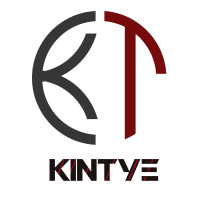Mastering SEO is essential for any business aiming to improve its online presence and attract more organic traffic. Search engine optimisation (SEO) is a powerful tool that helps your website rank higher on search engine results pages (SERPs), driving more visitors and potential customers. At Kintye, we believe in empowering businesses with effective SEO techniques that enhance visibility and foster growth. This comprehensive guide will delve into the key aspects of mastering SEO and how to implement these strategies to increase website visibility and boost organic traffic.
What is SEO Marketing?
SEO involves optimising your website to make it more attractive to search engines like Google. The goal is to rank higher in search results for relevant keywords, thereby increasing the likelihood that users will visit your site. Mastering SEO requires thoroughly understanding its core components: keyword research, on-page optimisation, off-page optimisation, and technical SEO.
Steps of Mastering SEO
Here is a step-by-step SEO guide:
- Keyword Research
The foundation of any successful SEO strategy is thorough keyword research. This process involves identifying potential customers’ terms and phrases when searching for products or services related to your business. Tools like Google Keyword Planner, SEMrush, and Ahrefs can help you discover high-traffic keywords that are relevant to your niche.
When conducting keyword research, focus on finding a mix of short-tail and long-tail keywords. Short-tail keywords are broad search terms with high search volumes and competition. Long-tail keywords are more specific phrases with lower search volumes but also lower competition. Including both types of keywords in your content can help you attract a broader audience while targeting specific niches.
On-Page Optimisation techniques
On-page optimisation refers to the practices you implement directly on your website to improve its search engine ranking. This includes optimising content, meta tags, URLs, and internal linking.
- Content Quality: Create high-quality, informative, and engaging content that provides value to your audience. Use your targeted keywords naturally throughout your content, but avoid keyword stuffing, which can harm your rankings.
- Title Tags and Meta Descriptions: Craft compelling title tags and meta descriptions that include your primary keywords. These elements are crucial as they appear in search results and influence click-through rates.
- URL Structure: Ensure your URLs are clean and descriptive and include relevant keywords. Avoid using long, complex URLs that are difficult for users and search engines to understand.
- Header Tags (H1, H2, H3): Use header tags to structure your content and make it easier for readers to navigate. Including keywords in your headers can also improve your SEO.
- Internal Linking: Link to other relevant pages on your website to help search engines understand the structure of your site and distribute link equity. This also keeps visitors engaged and reduces bounce rates.
Off-Page Optimisation techniques
SEO Off-page optimisation involves activities outside your website that can improve its ranking. The primary focus here is on building high-quality backlinks from reputable websites, which signal to search engines that your content is valuable and trustworthy.
- Link Building: Develop a robust link-building strategy by contacting relevant websites and bloggers for guest posting opportunities. Creating shareable content, such as infographics and research studies, can also attract natural backlinks.
- Social Media Engagement: Actively engage with your audience on social media platforms to increase brand awareness and drive traffic to your website. While social media signals are not a direct ranking factor, they can indirectly impact your SEO by increasing the visibility and shareability of your content.
- Online Directories and Listings: Ensure your business is listed in relevant online and local directories. Consistent and accurate NAP (Name, Address, Phone Number) information across all platforms can improve your local SEO.
Technical SEO Checklist
Technical SEO focuses on optimising your website’s backend to ensure it is easily crawlable and indexable by search engines. This includes improving site speed, mobile friendliness, and overall site architecture. Here are the technical SEO factors:
- Site Speed: A fast-loading website provides a better user experience and can improve your search rankings. Use tools like Google PageSpeed Insights to identify and fix issues slowing down your site.
- Mobile Optimisation: With the increasing number of mobile users, having a mobile-friendly website is crucial. Implement responsive design to ensure your site looks and functions well on all devices.
- XML Sitemap: Create and submit an XML sitemap to search engines to help them understand your website’s structure and index your pages more efficiently.
- Robots.txt: Use a robots.txt file to control parts of your site that search engines can crawl and index. This can prevent duplicate content issues and ensure important pages are prioritised.
- SSL Certificate: Ensure your website uses HTTPS instead of HTTP, as this is a ranking factor for Google. An SSL certificate boosts your SEO and provides a secure browsing experience for your visitors.
SEO Content Writing Strategy
Content is at the heart of mastering SEO. Developing a content strategy that aligns with your SEO goals is essential for driving organic traffic and improving your rankings.
- Blogging: Regularly publish blog posts on topics relevant to your industry and target audience. Blogging allows you to target a wide range of keywords and provides fresh content for search engines to index.
- Content Diversification: Create various types of content, such as videos, infographics, podcasts, and case studies. Diversifying your content keeps your audience engaged and can attract different segments of your target market.
- User-Generated Content: Encourage your audience to create content, such as reviews, testimonials, and social media posts. User-generated content adds credibility and can enhance your SEO efforts.
SEO Monitoring and Analytics
Monitoring your SEO performance and analysing the data is crucial for ongoing success. Use tools like Google Analytics and Google Search Console to track your website’s traffic, keyword rankings, and user behaviour.
- Performance Metrics: Monitor key performance metrics, such as organic traffic, bounce rate, average session duration, and conversion rates. These insights help you understand what’s working and where improvements are needed.
- Keyword Rankings: Regularly check your keyword rankings to see how well your content performs. Adjust your strategy based on which keywords are driving traffic and which need more focus.
- Competitor Analysis: Monitor your competitors’ SEO strategies and performance. Identify their strengths and weaknesses to inform your own SEO efforts.
Staying Updated with SEO Trends
SEO is an ever-evolving field, and staying updated with the latest SEO trends and algorithm changes is essential for mastering SEO.
Follow industry blogs, attend webinars, and participate in SEO forums to keep your knowledge current.
- Algorithm Updates: Search engines frequently update their algorithms, which can impact your rankings. Stay informed about these changes and adjust your strategy accordingly.
- Emerging Trends: Keep an eye on emerging SEO trends, such as voice search optimisation, AI-driven SEO, and the growing importance of user experience. Adapting to these trends can give you a competitive edge.
Conclusion
Mastering SEO is a continuous process that requires dedication, strategic planning, and a deep understanding of how search engines work. By implementing the strategies outlined in this guide, you can boost your website’s visibility, attract organic traffic, and achieve long-term success.
At Kintye, we are committed to helping businesses navigate the complexities of SEO and harness its power to drive growth. Contact us today to learn more about our SEO services and how our SEO optimisers can help you achieve your digital marketing goals.








